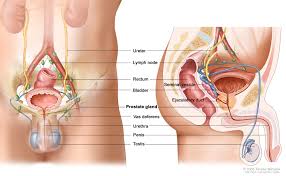Prostate Cancer - Definition
When cell in the body begin to grow out of control. the condition is called cancer. Cells in almost any part of the body become cancer cells and can spread to other parts of the body. Learn more about cancer and how it develops and spreads.( Best oncologist in Delhi Ncr )
Prostate cancer begins when cells in the prostate begin to grow out of control. Prostate is a gland that is present in only men. It produces a fluid that is part of the semen.
The prostate is located below the bladder (the hollow organ that stores urine) and in front of the rectum (the last part of the intestine). Behind the prostate is a gland, the seminal vesicle, which increases the amount of fluid in the sperm. The urethra is the tube that carries urine and semen through the penis and the center of the prostate.
Prostate Cancer - Types
Almost all types of prostate cancer are adenocarcinomas. These cancers come from glandular cells, the cells that make prostatic fluid and add it to semen.
Other types of cancer that can occur in the prostate include:
1.Small cell carcinoma
2.Neuroendocrine tumors (excluding small cell carcinoma)
3.Transitional epithelial cancer
4.Sarcoma
These other types of prostate cancer are rare if you are diagnosed with prostate cancer, it is almost certain that it is adenocarcinoma.
Some prostate cancers begin to spread quickly and often, but most do happen slowly. In fact, suicidal demands have shown that many older men (and still some men and women) who die from other causes are also suffering from prostate cancer with no effect during the course of the kill. Usually neither they nor their doctor know they have it. ( Consult with Best cancer doctor in India - Dr. Dodul Mondal )
Pre - Conditions for Prostate Cancer
Some studies have shown that prostate cancer begins as a precancerous lesion, although it is not clear. These conditions sometimes occur when men undergo a prostate biopsy (removal of cells in the process of diagnosing cancer).
Prostatic intraepithelial neoplasia (PIN)
In PIN, the presence of prostate cells changes under the microscope, but abnormal cells in other stages of the prostate (such as cancer cells) do not seem to continue to grow. According to the degree of abnormality of the cells, they are classified as:
Low grade PIN : The description of prostate cells looks almost normal.
High grade PIN: The bottom of the battery looks abnormal.
It is believed that a low PIN has nothing to do with the risk of prostate cancer in men. On the other hand, advanced PINs are considered a precursor to prostate cancer. If you have a prostate biopsy and find a high PIN, you are more likely to develop prostate cancer over time. ( best radiation oncologist in delhi ncr )
PIN codes began to appear in the prostate of some men after twenty years. However, many men with a PIN never develop prostate cancer.
Proliferative inflammatory atrophy (PIA)
With the PIA, prostate cells appear smaller than normal and show signs of inflammation in that area. Although the PIA is not a cancer, researchers believe that the PIA may increase the incidence of injections for drug users and may directly lead to prostate cancer.

.png)


No comments:
Post a Comment